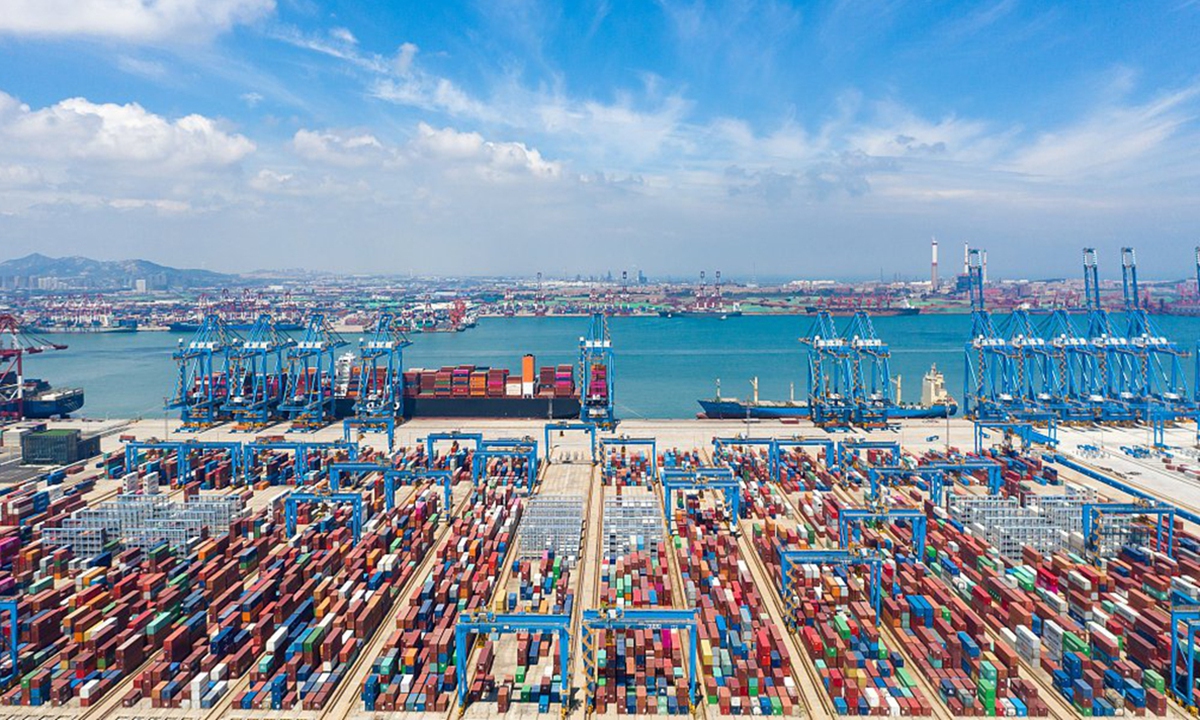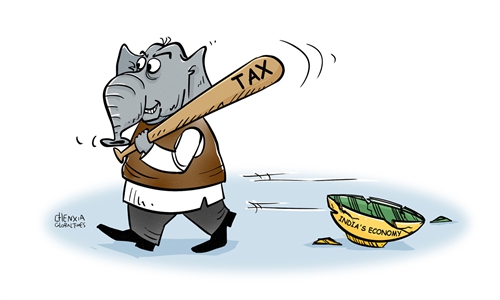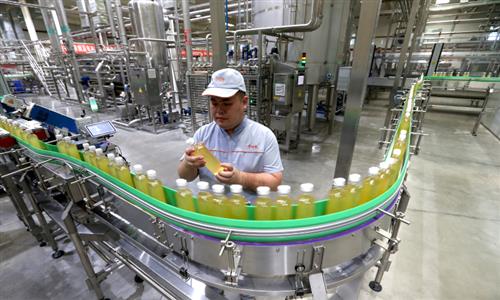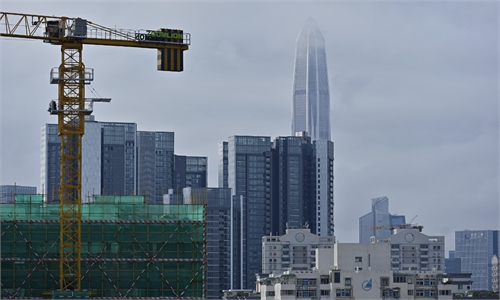
Tourists visit a commercial street in Yuzhong District in southwest China's Chongqing Municipality. Chongqing has launched a variety of activities at nighttime to boost night economy since the beginning of this year. Photo: Xinhua
After a series of Chinese policymakers' back-to-back policy measures to boost the economy in the second half of 2023, many around the world are keeping a close eye on China's forthcoming economic data for July to gauge the recovery trajectory of the world's second-largest economy amid downward risks in other major economies.While data for industrial output, fixed-asset investment and consumption in July will likely point to slight improvements, challenges faced by the Chinese economy are also expected to be highlighted, analysts said on Sunday. However, after the traditionally down season for economic activity in July and August, a more pronounced economic rebound is expected at the end of the third quarter and the fourth quarter, which will ensure annual growth targets are met, thanks to the increasing policy support, they noted.
Globally, China's economy will remain one of the fastest growing among major economies and the biggest contributor to global growth for the foreseeable future given its vast potential, while the US, contrary to certain positive indicators touted by US politicians ahead of the presidential election next year, is facing a litany of risks, including lingering recessionary pressure, deteriorating governance and reckless protectionism, which is also a grave threat for the world economy as a whole, according to Chinese analysts.
China's National Bureau of Statistics (NBS) is slate to release data for value-added industrial output, fixed-asset investment and retail sales for July on Tuesday. While a monthly GDP figure is not expected, the data, coupled with a number of recent indictors such as foreign trade, offers a clear picture of economic operations during the month, also the start of the second half of the year.
For July, analysts and institutions expected a slight improvement in the indicators, citing persistent downward pressure and seasonal factors. For example, Cinda Securities said in a recent note that growth in industrial output could reach as high as 4.8 percent year-on-year in July and retail sales might hit as high as 5 percent. However, in terms of fixed-asset investment, Cinda expects a significant decline of 11.1 percent in real estate investment due to a downturn in the property sector.
For context, according to NBS data, in June, China's value-added industrial output expanded by 4.4 percent year-on-year, accelerating from a 3.5 percent growth in May and beating market expectations. However, growth in retail sales slowed significantly from 12.7 percent in May to 3.1 percent in June. Fixed-asset investment also expanded by 3.8 percent in the first six months of 2023, beating a forecast for a 3.5 percent growth.
"The economic situation in July remains tough, but China's economy will welcome a round of improvement during the golden months of September and October," Pan Helin, joint director of the Research Center for Digital Economics and Financial Innovation affiliated with Zhejiang University's International Business School, told the Global Times on Sunday, noting that July and August are usually a slow season for economic activity.

China trade economy File photo: VCG
Chinese policymakers have repeatedly acknowledged what they call "triple pressures" - shrinking demand, disrupted supply and weakening expectations, and have recently issued a long list of measures to boost various aspects of the Chinese economy, including the private sector and consumption, while vowing to take more vigorous measures to stabilize economic growth.
In the latest move, the State Council, China's cabinet, on Sunday announced 24 measures to improve the business environment for foreign investors and attract more foreign investments. The measures cover six areas, including granting foreign businesses national treatment, enhancing protection of foreign investments and increasing fiscal and tax support.
Challenges and fluctuations in certain economic indicators are normal during the economic recovery process from the three-year pandemic, which generally takes two to three quarters, said Hu Qimu, deputy secretary general of the digital real economies integration Forum 50, adding China only started that recovery process since the end of last year.
"Therefore, when talking about China's economic recovery, we have to separate the short-term from the long-term. Some short-term data cannot be regarded as the medium and long-term trend of China's economic recovery," Hu told the Global Times on Sunday. "Overall, the data are getting better and better. I think that by the end of the third quarter and the beginning of the fourth quarter, China will be able to fully enter the recovery stage of economic growth."
Many US politicians and media outlets have been fixated on certain economic indicators in China to hype various dire claims about the country's economic outlook, including the so-called "deflation," while ignoring profound risks and challenges in the US economy. US President Joe Biden on Thursday called China's economy a "ticking time bomb," even though he, known for his gaffes during speeches, was widely wrong on the numbers.
Such remarks from US politicians and biased reports from US media outlets about China's economic outlook are part of a broader political campaign within the US to divert attention away from domestic economic and other challenges during a presidential election cycle, Chinese analysts said.
"The US economy is prosperous on the surface, but it is actually a capital bubble. Once the bubble bursts, economic and financial crises will erupt. And its economic hazards have not been ruled out at all," Hu said, pointing to toxic US policies both in terms of its own economic policymaking and protectionist trade policies that have profoundly disrupted global trade and supply chain.
While some foreign media outlets cite some positive economic indicators to argue that the US economy may have avoided recession and headed for a so-called soft-landing, many risks remain, including its debt struggles, partisan fights and poor or the lack of any concrete economic policymaking, analysts noted.
Rating agency Fitch Ratings recently downgraded the US government's top credit rating, citing, among others, a steady deterioration in governance over the past two decades. "The rating downgrade of the [US] reflects the expected fiscal deterioration over the next three years, a high and growing general government debt burden, and the erosion of governance," it said.
"The US is relying on increasing debts to give cash to consumers to drive consumption," which is the only growth spot in the US. And the essence of issuing debt is to grab money from all over the world for its own consumers. This is how it shifts its own crisis onto others and is unsustainable," Hu said.






